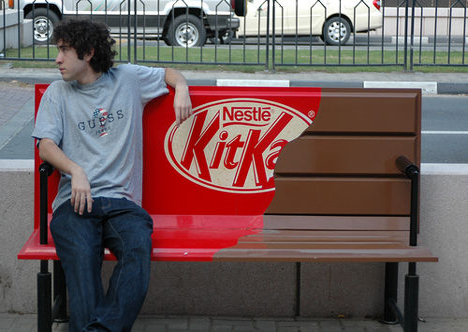 |
| Photo from Rnjith Kishnan |
Here are five common marketing mishaps you should avoid with your efforts:
- Being Inconsistent with your Brand. Although some companies have gone through the process of developing their brand (key messages and unique proposition statements), many employees within a company still have their own version when selling their products/services. These versions of the firms brand can change depending on who is receiving the information. The result? A confused consumer—unsure of what your company does, who you are and how you are different than competitors. The result: consumers are unable to convey your offering to anyone else as they are not sure what it is. Brand awareness is only built by consistently communicating your company’s position and identity each and every time, so that eventually your cnsumers will repeat your positioning exactly as you intend them to repeat it. All employees are ambassadors of the brand and need to embrace its true meaning.
- Know your Audience. Failing to market to your audience can cause you millions of dollars that could be revenue:
- A few years ago, when Medicare recipients needed to sign up for the Medicare prescription drug program of their choice, those in charge of marketing the program were puzzled regarding why a large percentage of eligible people had not registered as the deadline drew near. At the time, the only way to sign up for the Medicare drug program was via the Internet. Can you think of anything wrong with that concept? Many members of the Medicare-eligible population do not know how to use the Internet, and are not interested in learning how to do so. Once alternative means of registering for the programs were devised, signups progressed more smoothly. This situation demonstrates one of the most common problems leading to marketing blunders. Marketers have to consider the motivations, needs, abilities and skill level of the target market at all times.
- Coors Rocky Mountain Spring Water. If you're one of the most popular beer brands in the world, it's a pretty safe bet that even your most loyal consumers would not be interested in buying bottled water from you. Case in point -- Coors Rocky Mountain Spring Water. Spring water from the Rocky Mountains is indeed used during the brewing process of some Coors products. However, when bottled alone, it's missing one key ingredient -- alcohol. Apparently Coors customers just weren't that into buying water when it wasn't enhanced by additional ingredients like barley and yeast.New
- New Coke. The Coca Cola Company spent a lot of time and money developing, distributing, and marketing New Coke only to discover that their customers were loyal to "old" Coke. Coca Cola drinkers are notoriously loyal, and had absolutely no interest in switching to a newer version of their favorite product. The moral of the story here is that change, just for the sake of doing something different, isn't a sound marketing strategy.
- McDonald's Arch Deluxe. In an effort to class up the McDonald's brand, the company created the Arch Deluxe, a product marketed towards adults with more sophisticated palates. Just one problem -- people don't go to McDonald's for sophistication. McDonald's customers know what they want, and what they want is a classic and convenient burger. Needless to say, when the Arch Deluxe debuted in 1996, consumers weren't lovin' it.
- Focusing on YOU instead of your Product/Service. People don’t buy because you won awards, you do good deeds or that your company was started in their hometown back in 1923. People buy because of the attributes and benefits of what you can offer them. Focus your marketing on these and how you can help your consumer - that’s what they care about.
- Bad Translations in International Markets. Expanding your business internationally is a big endeavor for your business and an exciting milestone. Make sure you do your homework to avoid marketing embarrassments and failed efforts:
- When Gerber started selling baby food in Africa, they used the same packaging as in the US, with the beautiful Caucasian baby on the label. Later they learned that in Africa, companies routinely put pictures on the label of what's inside, since most people can't read.
- Colgate introduced a toothpaste in France called Cue, the name of a notorious porno magazine.
- Pepsi's "Come alive with the Pepsi Generation" translated into "Pepsi brings your ancestors back from the grave," in Chinese.
- For Professional Service Firms – Failure to Follow-up. One of the biggest reasons why professional service marketing efforts fall flat is the lack of powerful follow-up. These firms build business based on relationships. The best marketing efforts can drive brand recognition, but the trust and rapport that is built during the “marketing” process is what sells. And this selling takes time. It’s important to stay in front of people consistently so that when they’re ready to buy you’ll be there. People usually need to be exposed to a marketing message several times before making a decision to purchase. Another reason to stay top of mind with your prospects and clients is that they may not be ready to purchase but they may know someone else who is. By staying in front of them with consistent follow up, they’ll have the information, confidence and trust to refer you to their friends, family, associates and others.
Marketing cannot be rushed. Take time to do your research, plan your efforts and execute to provide unique benefits to your consumers.
To read more mistakes companies have made with their marketing, here is an interesting article I read on Forbes.com.





